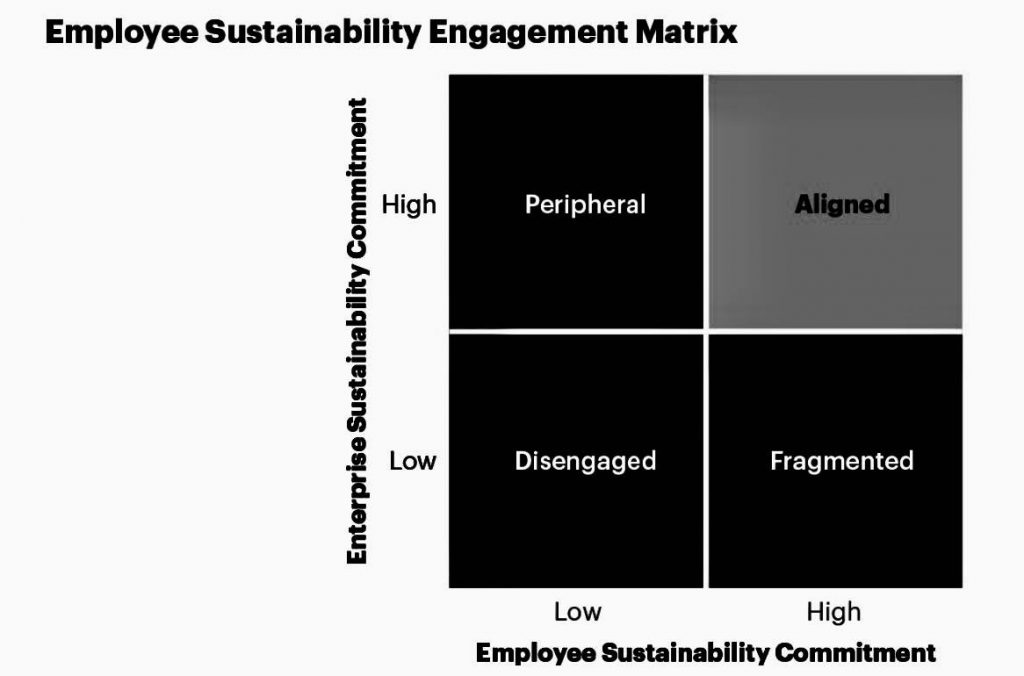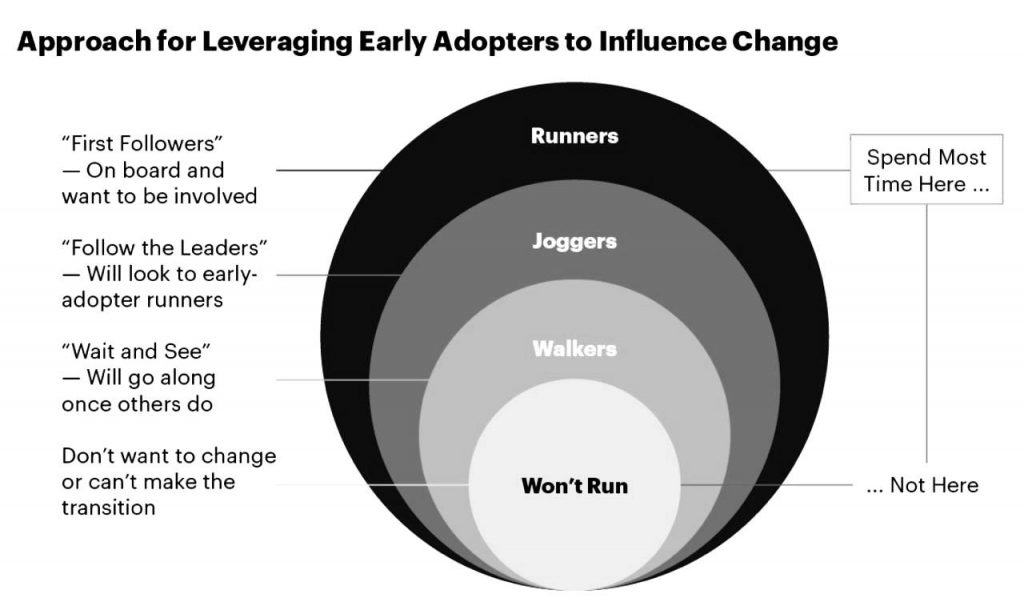Recent surveys show that 64% of employees want to work for an organization with a solid social and environmental consciousness. However, favorites often struggle to entice employees into sustainability initiatives. Managers often ask, “How can we productively engage our employees on sustainability issues? “Bridging this engagement gap is a challenge, but an imperative, so employees at all levels and in all regions must advocate for sustainability so the company can achieve its principled goals.
Heads can start by understanding where their employees currently stand in terms of looking at their company’s values, using the Employee Engagement Matrix for Sustainability.

This figure will help managers understand how company goals overlap with employee goals to align these metrics better:
Peripheral: Employees are engaged in sustainability through a corporate goal but are not driven by personal commitment. The sustainability strategy is implemented at the management level or within a central team with little involvement from the broader organization unless the stakeholder is directly connected to the strategic goals.
Fragmentation: Employees are personally committed to sustainability and participate in siloed initiatives led by business units, regions, or employees. The organization does little to gather employee input or align corporate values with sustainability.
Detachment: The organization is focused on traditional value metrics, such as profit or service, and does not involve employees in sustainability issues. Employees do not feel that sustainability aligns with their values but may think that they align with the organization’s non-sustainability-oriented goals.
Consistency: Employees feel a common purpose with their organization, where sustainability aligns with organizational values and employee commitment. Employees receive corporate help and have channels through which they can share and act on their ideas.
Aligning employee values with business goals can be unrealistic or desirable for every organization. Some organizations may begin their sustainability journey and are still developing a business case for setting specific goals. Others may have priorities that are inherently at odds with the sustainability agenda or are limited in resources and budget. Despite this, employees with a solid commitment to sustainability may become intrinsically engaged, lose motivation at work, or leave for an organization that better aligns with their values.
In organizations with a fragmented employee base, employees, regions, or business units work in their direction, resulting in a blurring of purpose and inefficient use of resources.
Change the employee base.
Once leaders understand where employees fall, the question becomes: How can we move employees to where the organization wants to be? The following tactics are ways leaders can engage employees on sustainability issues.
Listen: Employees can be the organization’s greatest advocates or its harshest critics. 83% of organizations say they survey employees about culture, but only 39% survey ESG issues. 2 Supply chain leaders can gather information on employee sentiment through various engagement mechanisms, including surveys, focus groups, and analysis of employee behavior across channels and engagement platforms.
Start by recruiting “runners” who are passionate about sustainability and willing to take action. These people can discover initiatives that motivate employees and generate early ideas to build the business case.

It is natural to want to work with “walkers” or “non-runners” to try to convince them to join. However, organizations will see better results if they shift their focus to finding and using “runners.” “Runners” pay attention to “runners” first and are strongly influenced by them. “Walkers” will wait to see how other employees engage and follow the leaders. Of course, some “out-of-control” employees can be influenced; however, these individuals will feel strongly that they are not prioritizing sustainability and probably should not adapt their efforts.
Provide communication channels: think about what channels can be used to encourage employee autonomy. If an employee has an idea to reduce greenhouse gas emissions, will they know how to act on it? Provide a platform for employees to present ideas and encourage competition among colleagues. Reward and recognize employees committed to sustainability and pursuing their interests. Evaluate the sustainability strategy through an employee-centric lens: employees should feel energized and engaged in the benefits of the overall goal. Organizations must move to incorporate directional insights into their materiality and sustainability assessment strategy. Some organizations use ESG surveys for employees and other stakeholders to directly guide materiality assessments, while others rely on senior management to indirectly communicate these sentiments.


